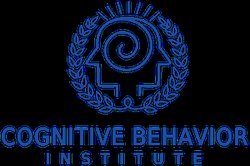
- Avoidance: Avoidance refers to the behavior when someone is actively trying to escape or stay clear of situations that trigger anxiety or distress.
- Compulsions/Rituals: Compulsions or rituals are repetitive behaviors or thoughts that someone feels they must do to reduce anxiety brought on by obsessions.
- Exposures: Exposures are behavioral experiments that aim to confront situations, objects, thoughts, or images that trigger anxiety or distress.
- Exposure and Response Prevention (ERP): Exposure and Response Prevention therapy treats OCD by engaging in exposures that involve gradually facing fears while resisting the urge to perform compulsions.
- Family Accommodation: Family accommodation is when loved ones help or participate in the rituals or behaviors of someone with OCD, unintentionally reinforcing their symptoms.
- Habituation: Habituation involves gradually getting used to something that scares you. This is achieved by facing the feared stimulus repeatedly without engaging in compulsions.
- Hierarchy: A hierarchy is a list of feared situations ranked from least to most anxiety-inducing, which aims to help individuals face their fears in a gradual manner.
- Mental Compulsions: Mental compulsions are repetitive mental acts that individuals with OCD perform to reduce anxiety or prevent feared outcomes. These can include things like counting, praying, repeating phrases, or mentally reviewing past events in one's mind.
- Obsessions: Obsessions are recurrent and persistent thoughts, urges, or images that are experienced as intrusive and unwanted, and that cause significant anxiety or distress.
- Obsessive Compulsive Disorder (OCD): Obsessive-Compulsive Disorder is characterized by the presence of obsessions, compulsions, or both. These obsessions and compulsions are time-consuming and cause significant distress or impairment in social, occupational, or other important areas of functioning.
- OCD Subtypes: Some of the more common subtypes of OCD include contamination obsessions, obsessions around symmetry/ordering, harm obsessions, relationship obsessions, hoarding/saving obsessions, religious/moral obsessions (scrupulosity), and somatic obsessions.
- Reassurance-seeking: Reassurance seeking refers to a behavior where individuals repeatedly seek validation, support, or confirmation from others in an attempt to alleviate anxiety or uncertainty related to their obsessions or fears.
- Subjective Units of Distress (SUDS): Subjective Units of Distress (SUDS) is a self-report measure used in exposure therapy to assess the intensity of distress or anxiety experienced by an individual in response to a specific situation.
- Thought Action Fusion: Thought-action fusion (TAF) is the belief that thinking about something is equivalent to acting on it.
- Trigger: A trigger is any stimulus that evokes a strong emotional or psychological response. A trigger can be an external event, an internal thought or memory, or a physiological sensation.
- Types of Compulsions: Some of the more common compulsions are checking, washing/cleaning, counting, repeating, ordering or arranging, mentally reviewing, seeking reassurance from others, praying, neutralizing a thought, and hoarding.
- YBOCS/CY-BOCS: The Yale Brown Obsessive Compulsive Scale (YBOCS) and Children’s Yale Brown Obsessive Compulsive Scale (CY-BOCS) are rating scales used in assessing the severity of OCD symptoms in adults and children.
- Sara Steigman, LSW
References:
American Psychiatric Association. (2013). Diagnostic and statistical manual of mental disorders (5th ed.). American Psychiatric Publishing.
American Psychiatric Association. (n.d.). What is obsessive-compulsive disorder? https://www.psychiatry.org/patients-families/obsessive-compulsive-disorder/what-is-obsessive-compulsive-disorder
International OCD Foundation. (n.d.). Retrieved from https://iocdf.org
National Collaborating Centre for Mental Health (UK). (2006). Obsessive-compulsive disorder: Core interventions in the treatment of obsessive-compulsive disorder and body dysmorphic disorder. British Psychological Society (UK). (NICE Clinical Guidelines, No. 31). Appendix 15, Diagnostic criteria. Available from https://www.ncbi.nlm.nih.gov/books/NBK56452/
National Institute of Mental Health. (n.d.). Obsessive-compulsive disorder (OCD). https://www.nimh.nih.gov/health/topics/obsessive-compulsive-disorder-ocd
Nunez, K. (2022, September 26). What is obsessive-compulsive disorder (OCD)? Verywell Mind. https://www.verywellmind.com/what-is-obsessive-compulsive-disorder-ocd-2510675

